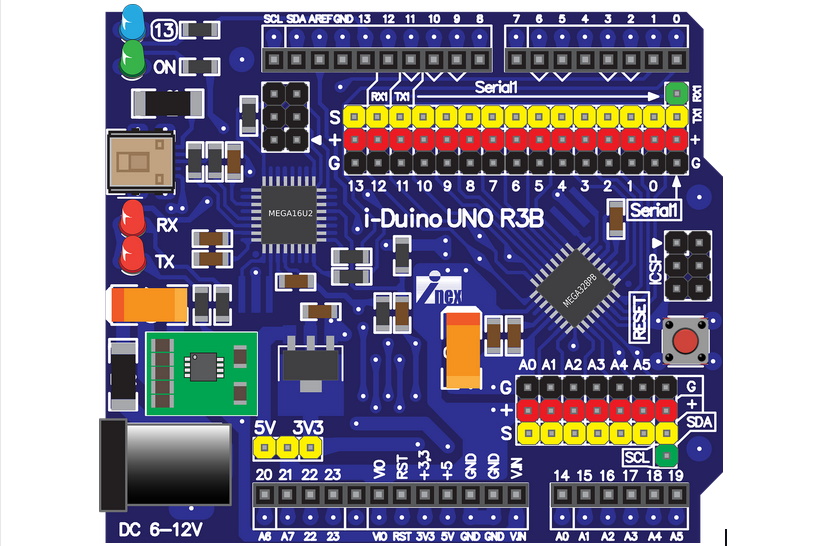Everything you need to know about Arduino

In this technology based era, machines can help you to build a smart home or open-source electronics quickly.
In this blog, we will get to know one of the important technical devices which is known as Arduino.Arduino is a platform to create open-source electronics, and the creators or developers can use the free hardware and software flexibly and easily. It allows you to use it to create different types of single-board microcomputers.
The free hardware devices are designed so that the diagrams or specifications are accessible to the public and can be easily replicated by anyone. Arduino offers this base so that any creator can create their unique boards with their set of specifications that are equally functional as the others. On the other hand, free software provides computer programs with easily accessible code for everyone to use and modify. Arduino IDE is a programming environment provided by Arduino, with which the creators can help create the applications for the Arduino boards and give them different kinds of utilities.
The Origin Of Arduino
To facilitate and provide easy access to programming and electronics, a team of students from the Institute of Interactive Design of Ivrea, Italy, developed Arduino in 2003. They designed it such that Arduino could become an efficient and easy alternative to Basic Stamp, which cost more than $100 back in those days. The team's hard work resulted in an Arduino that consists of all important elements required to create connectivity between the peripheral of the inputs and outputs of the microcontroller. Furthermore, Arduino can be easily programmed in Windows, Mac OS, or Linux.
How The Arduino Works?
The base of the Arduino is ATMEL AVR Microcontroller, an integrated circuit to record the instructions with the programming language that can be used in the Arduino IDE environment. These instructions allow the creation of programs to interact with the circuit of the board. The most commonly used microcontrollers in the Arduino platforms are Atmega 168, Atmega 1280, and similar others due to their simplicity and also the fact that these are being expanded to Intel microcontrollers as well as Atmel microcontrollers.
The Arduino microcontroller has various communication ports and input or output ports to connect with the peripherals on the board. The information will be transferred to the microcontrollers through the peripheral, which will be in charge of processing the data. Arduino also provides the IDE that executes the programming language and all the tools to transfer the firmware. The prominent feature of the program is its ease of use and simplicity.
The simplicity of the language makes it easy for anyone to carry out creative projects. By downloading and installing the IDE, copy-pasting the interested code, and then uploading it to the HW can make the tasks easier. After that, the corresponding wiring with these peripherals would be made, and the software can easily interact with this hardware, and all of these processes are quite budget-friendly.
The basic design of the Arduino can be shared to find different types of boards with various colours, shapes, and sizes as per the requirements. The Arduino boards have other features called Shield, which connects to the mainboard to provide other functions, such as real-time clock, GPS, Radio connectivity, and others.
What is Arduino Used For?
For the creation of stand-alone elements, connections of devices, and interaction with software and hardware, Arduino can be used. Furthermore, Arduino can be used to control the elements with the help of the light sensor connected with it or convert information from a source into action.
Arduino makes it easy as well as possible to automate anything to turn into an autonomous agent. Arduino-based solutions can be approached to create control over the lights or devices to develop Internet-connected devices. Arduino Nano 33 is the cheapest and easiest point of entry in creating or enhancing the devices. Be it a sensor network connected to the office or home router, Nano 33 is the best possible solution.
The Importance Of Arduino Community
The success of Arduino depends on various factors, and the most important factor is the supportive community of Arduino. The community supports all the developments, shares the knowledge, develops libraries to facilitate Arduino’s usage, and then publishes the projects, which can act like the foundation of another project.
Importance Of Arduino In Hardware World
Arduino nano 33 has become an important element for the hardware manufacturing industry due to its extension-free hardware. The easy access to the tools' knowledge leads to more companies creating innovative products and better tools for prototyping.
With its microcontrollers, Arduino has simplified the work and offered the advantages like cheap, simple programming, extensible and free software, and hardware. Moreover, different technology concepts are handled while working with Arduino, which are not related to each other but are still given priority.
One important point you need to note is that, before learning Arduino, it is also important to first understand all the basics of programming to be able to ace the learning and usage process of Arduino.







